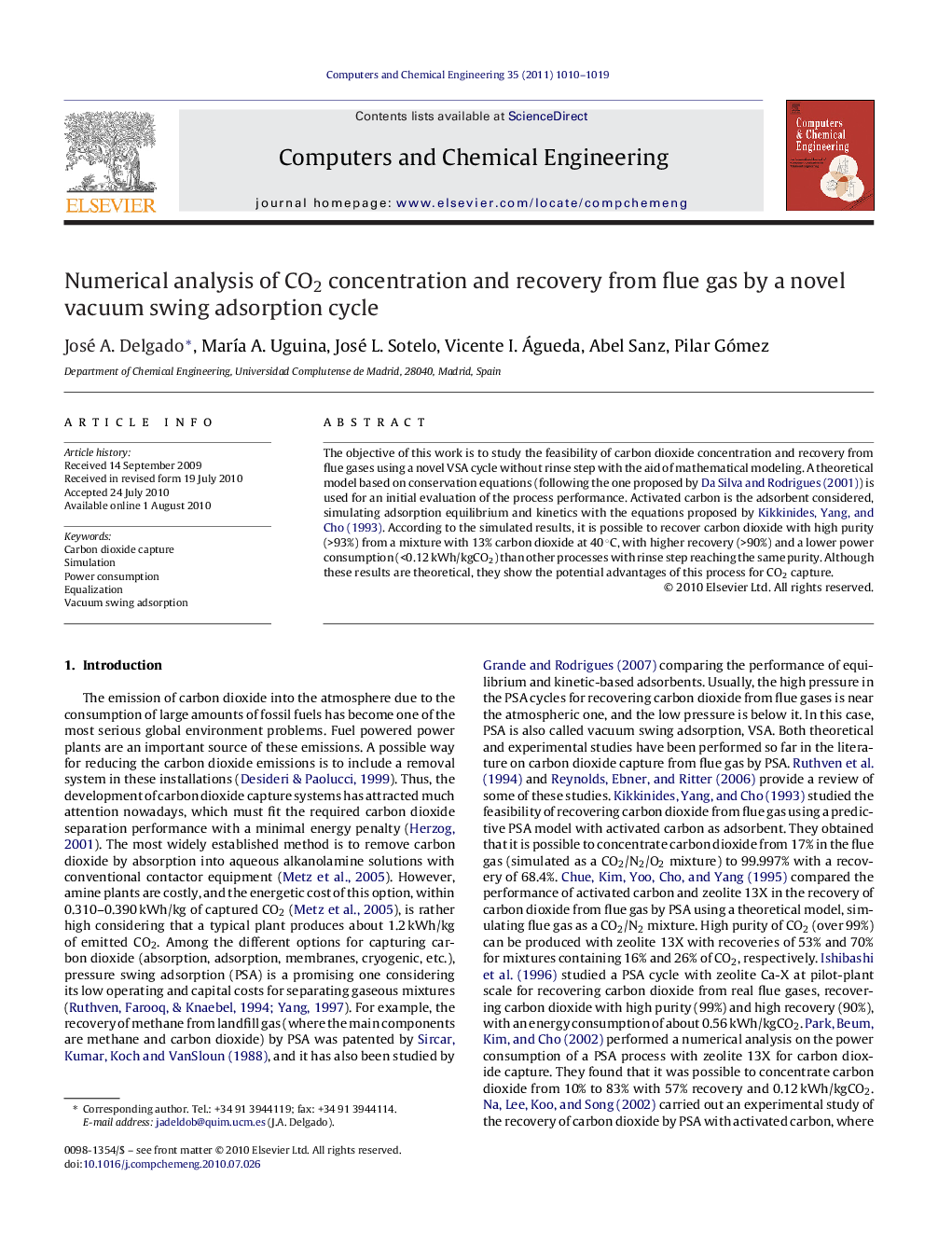| Article ID | Journal | Published Year | Pages | File Type |
|---|---|---|---|---|
| 173103 | Computers & Chemical Engineering | 2011 | 10 Pages |
The objective of this work is to study the feasibility of carbon dioxide concentration and recovery from flue gases using a novel VSA cycle without rinse step with the aid of mathematical modeling. A theoretical model based on conservation equations (following the one proposed by Da Silva and Rodrigues (2001)) is used for an initial evaluation of the process performance. Activated carbon is the adsorbent considered, simulating adsorption equilibrium and kinetics with the equations proposed by Kikkinides, Yang, and Cho (1993). According to the simulated results, it is possible to recover carbon dioxide with high purity (>93%) from a mixture with 13% carbon dioxide at 40 °C, with higher recovery (>90%) and a lower power consumption (<0.12 kWh/kgCO2) than other processes with rinse step reaching the same purity. Although these results are theoretical, they show the potential advantages of this process for CO2 capture.
